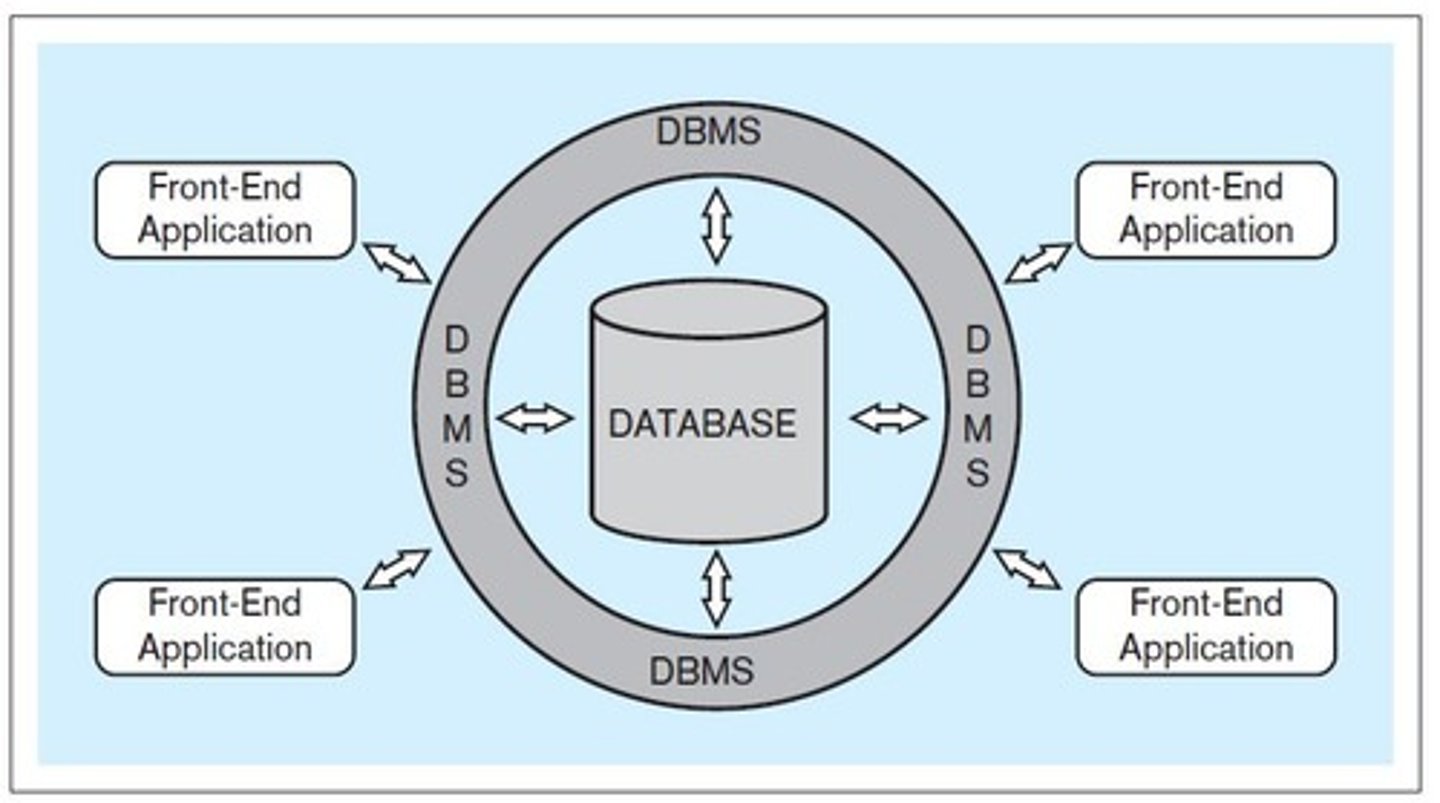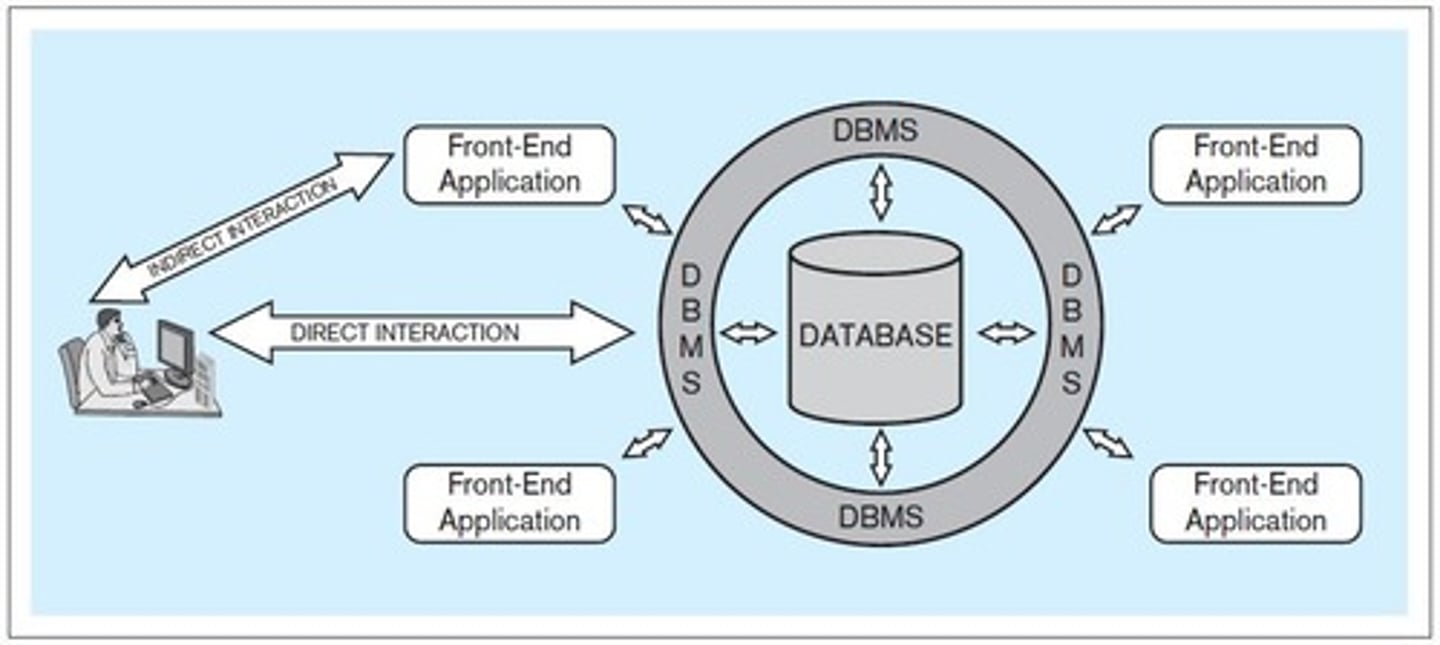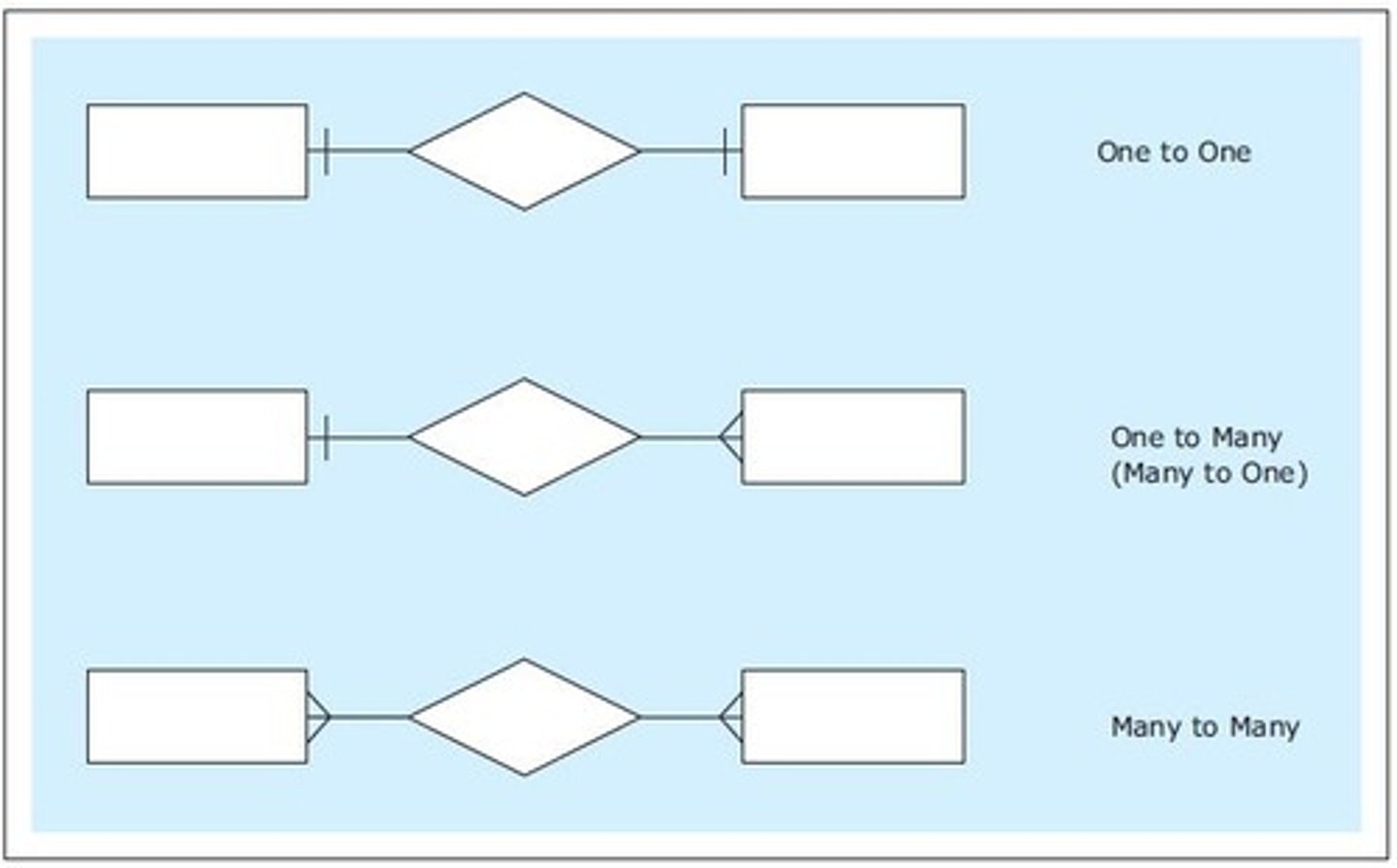Introduction to Databases in Business Information Systems
1/46
There's no tags or description
Looks like no tags are added yet.
Name | Mastery | Learn | Test | Matching | Spaced |
|---|
No study sessions yet.
47 Terms
Database
structured collection of related data stored on a computer medium

DBMS
software used for creation of databases, insertion, storage, retrieval, update, and deletion of the data in the database, and maintenance of databases

Front-End Applications
provide a mechanism for easy interaction between the users and the DBMS
Indirect interaction
user communicating with the database through front-end applications that are communicating with the DBMS on user's behalf
Direct interaction
user communicating with the database directly through DBMS
Requirements collection, definition, and visualization
the first and most critical step in the development of the database, resulting in the requirements specifying which data the future database system will hold and in what fashion, and what the capabilities and functionalities of the database system will be

Conceptual database model
a visualization of requirements by using a conceptual data modeling technique such as entity-relationship (ER) modeling

Example of Indirect interaction
an ATM user interacting with the bank's database by using the screen on the ATM machine
Example of Direct interaction
User issuing commands in the language of DBMS (typically SQL)
Database Modeling
Creation of an implementable database model
Logical Database Model
Preferred model for corporate databases, typically relational.
Relational Database Model
A structured database model using tables and relationships.
Database Implementation
Using DBMS to create an actual database.
Relational DBMS (RDBMS)
Software for implementing relational database models.
Primary Key
Unique identifier for a database table record.
Foreign Key
Field linking to a primary key in another table.
Database Deployment
Releasing the database system for business use.
Data Entry Form
Interface component for inputting data into databases.
Database Use
Operations like insertion, modification, and retrieval.
ER Diagram (ERD)
Graphical representation of database requirements.
Entities
Constructs representing tracked database items.
Entity Instances
Occurrences of a specific entity in the database.
Database Administration
Activities supporting database end users.
Database Maintenance
Ensuring database functionality and security.
Navigation Mechanism
System for accessing different application interfaces.
Attributes
Characteristics that describe an entity's details.
Unique Attribute
Attribute with distinct values for each instance.
Relationship
Connection showing how entities relate in ER modeling.

Cardinality Constraints
Limits on how many instances relate between entities.
Maximum Cardinality
Defines upper limits of entity associations.
Minimum Cardinality
Defines lower limits of entity participation.
Relationship Instances
Occurrences of a relationship between entity instances.
Relational Schema
Visual representation of a relational database structure.
Relation
Table in a relational database containing rows and columns; the main construct in the relational database model.
Column
Each must have a name, and within one table, each name must be unique.
Row
Within one table, each must be unique.
Single valued
Within each row, each value in each column must be single valued; multiple values of the content represented by the column are not allowed.
Same domain
All values in each column must be from the same predefined domain.
Relational database
Collection of related relations within which each relation has a unique name.
1:M relationship mapping
The relation mapped from the entity on the M side of the 1:M relationship has a foreign key that corresponds to the primary key of the relation mapped from the 1 side.
M:N relationship mapping
In addition to the two relations representing the two entities involved in the M:N relationship, another relation is created to represent the M:N relationship itself.
Composite primary key
The two foreign keys in the new relation formed from an M:N relationship create a composite primary key.
Entity integrity constraint
In a relational table, no primary key column can have null (empty) values.
Referential integrity constraint
In each row of a relation containing a foreign key, the value of the foreign key either matches one of the values in the primary key column of the referred relation or is null.
Database front-end
Provides access to the database for indirect use.
Form
Enables data input and retrieval for end users; provides an interface into a database relation or query.
Report
Presents the data and calculations on the data from one or more tables from the database in a formatted way.